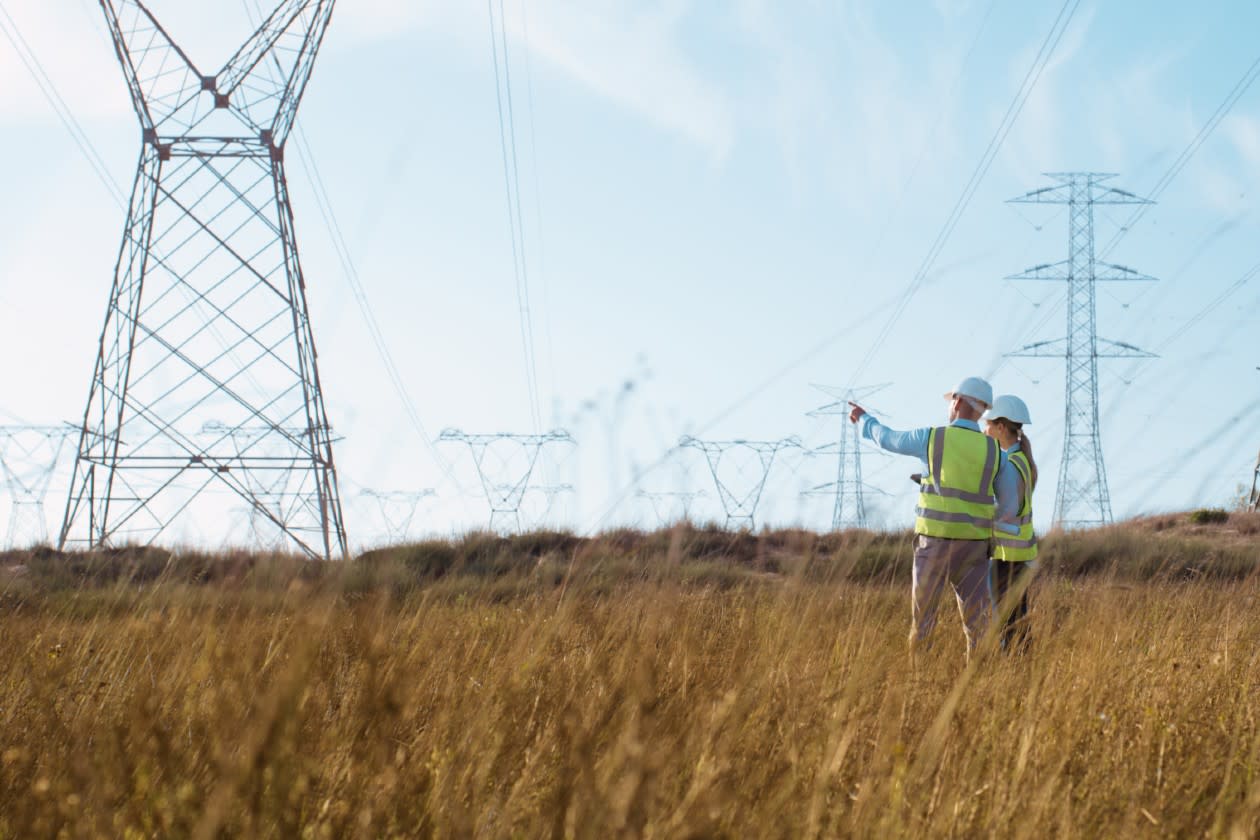SSE issued a short trading update ahead of its full-year results on 21 May. The group has tightened its underlying earnings per share (EPS) guidance from 154-163p, now expecting it to be in the 155-160p range (2024: 158.5p).
Renewables output is expected to have risen by around 17% to 13.0 TWh, reflecting increased capacity and “varied weather conditions”.
The group’s on course to deliver around £3bn of investment this financial year. Full-year guidance for the 2026/27 financial year has been reiterated, with SSE expecting underlying EPS of between 175-200p per share.
The shares were flat in early trading.
Our view
Just a few days after announcing its incoming CEO, SSE has let markets know that its renewable energy output powered higher last year. There’s much more investment still to come, which is forecast to propel earnings higher over the coming years.
SSE is attempting to charge towards a greener future, with increased capacity helping its renewable energy output rise around 17% last year. Looking ahead, at least £22bn has been earmarked for infrastructure upgrades in the next five years.
The shift to renewables is a bold and admirable move. But comes with a hefty dose of risk - they're not always reliable. To some degree, it's at the mercy of mother nature.
That’s why more flexible gas-fired plants are still part of the energy mix. They complement the renewables segment well and are on hand to plug any shortfalls in energy output when adverse weather comes along. These assets were loss-making in the first half, but due to the colder weather hitting and bringing a rise in energy demand, we expect to hear that profitability improved over the second half.
On the regulated networks side of things, SSE delivers electricity across Scotland and Southern England. This is classic utility territory - with revenues predictable and profits closely regulated. A portion of these regulated revenues are positively related to investment levels, and are also protected against inflation. However, the additional return isn't received until sometime after the service has been delivered and investment has been made, which can cause a drag on cash flows in the meantime.
The group’s investment plans look achievable but they're set to stretch the balance sheet, with the ratio of net debt to cash profits (EBITDA) likely to rise from 3.0x to between 3.5-4x in the medium term. While a moderate amount of debt isn't a bad thing, especially for a business with such reliable revenues, it does add pressure to keep delivering.
In recent years many areas of SSE's business have benefitted from high prices and increased price volatility. But with market conditions seemingly less turbulent now, profits in the flexible thermal and gas storage division look set to drop substantially. Other areas of the business will have to step up to pay the investment bill. Any missteps on this front could dent investor sentiment.
The valuation remains below the long-run average and doesn’t look too demanding to us. We’re optimistic about the group’s long-term prospects. But in the near-to-medium term, SSE faces some uncertainty as it tries to navigate the challenges of building for the future.
Environmental, social and governance (ESG) risk
The utilities industry is high-risk in terms of ESG. Management of these risks tends to be strong, with European firms outperforming their overseas counterparts. Environmental risks like carbon emissions, resource use and non-carbon emissions and spills tend to be the most significant risks for this industry. Employee health and safety and community relations are also key risks to monitor.
According to Sustainalytics, United Utilities’ management of ESG risk is strong.
In 2023, it was a lead performer in preventing pollution incidents, with the lowest number of incidents relative to peers per 10,000km of sewers. However, United Utilities’ ageing infrastructure means it’s exposed to climate impacts such as heavy rainfall and flooding. It has also been implicated in occasional drinking water contamination issues and some releases of untreated sewage, resulting in an ongoing investigation by regulators.
SSE key facts
All ratios are sourced from LSEG Datastream, based on previous day’s closing values. Please remember yields are variable and not a reliable indicator of future income. Keep in mind key figures shouldn’t be looked at on their own – it’s important to understand the big picture.
This article is not advice or a recommendation to buy, sell or hold any investment.No view is given on the present or future value or price of any investment, and investors should form their own view on any proposed investment.This article has not been prepared in accordance with legal requirements designed to promote the independence of investment research and is considered a marketing communication.Non - independent research is not subject to FCA rules prohibiting dealing ahead of research, however HL has put controls in place(including dealing restrictions, physical and information barriers) to manage potential conflicts of interest presented by such dealing.Please see our full non - independent research disclosure for more information.


